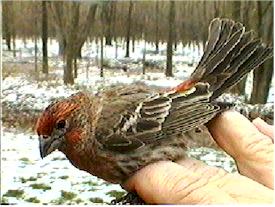
The House Finch, or Linnet, is originally a species of the Western USA and Mexico. In 1940, wild birds illegally sold as "Hollywood Finches" in New York were released in that city by dealers anxious to avoid prosecution. In 1943, these released birds were reported breeding in the New York area. By 1971, breeding populations extended along the east coast from New England to North Carolina. Their populations continued to expand westward. Reports of these birds in Indiana were sporadic in the mid 1970's. Now, this species is widespread over Indiana much of the USA and southern Canada.
Adult males vary in color from orange yellow to bright red. The color is
derived from carotenoid pigments that are obtained from their diet of seeds,
flowers, and fruits and added to the feathers during normal periods of feather
replacement.
Adult males vary in color from orange yellow to bright red. The color is derived
from carotenoid pigments that are obtained from their diet of seeds, flowers,
and fruits and added to the feathers during normal periods of feather
replacement.

Females and immature birds are brownish and lack the bright colors of the adult male.
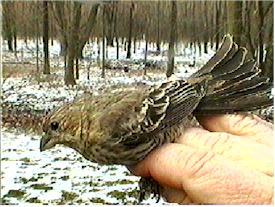
Studies have shown that brightly colored males are more successful at
attracting mates than duller males. Brightly colored males also survive the
winter better. The short convex bill of the House Finch is adapted to a diet of
seeds and fruits
.
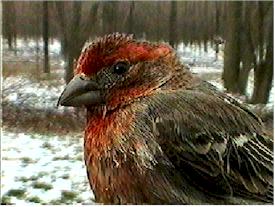
Some males show a yellowish to red color.
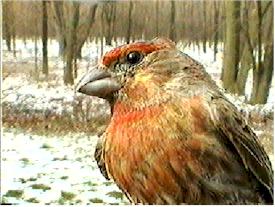
House Finches began making sporadic appearances in Indiana in the mid 1970's, and were first recorded on the Indiana Audubon Society May count in 1980. The first breeding record in Indiana occurred in 1981. Since then, population counts on the May, Christmas and Summer bird counts have increased dramatically.
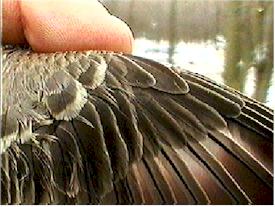
Upper wing coverts of adult birds are brown with pale edging.
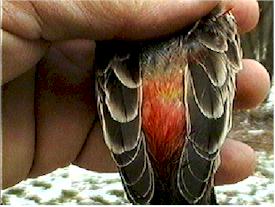
House Finch Rump Color
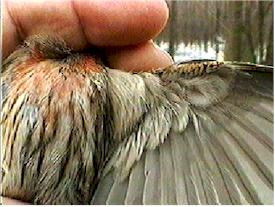
The breast is heavily streaked and in the males, also colored yellowish to
bright red.
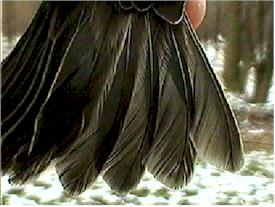
The tail is dark brown. Tail feathers in the adult have rounded tips. Those of immature birds are more pointed.
The nest, constructed by the female, may be placed in a variety of locations ranging from tree cavities to the vines attached to the side of a building. From 2 to 6 eggs are incubated by the female and hatch in about two weeks. Both parents care for the young. More than one brood may be raised in a breeding season. The rump of the adult male is also colored yellowish to bright red.
The Bird Banding Lab web site reports that between 1955 to 1997, a total of 780,571 House Finches were banded. Of these, 9,779 have been recovered, a recovery rate of 1.25%.
Banding studies show that birds may live up to 10 years in the wild. They are short distance migrants with some northerly individuals withdrawing to more southern regions during the winter, and resident flocks ranging widely over a geographical region. If you should recover a banded bird, report the band number to the Bird Banding Lab by calling 1-800-327-BAND.
House Finches are increasing dramatically. They have benefited from back yard bird feeding. Because of their preference for blossoms, buds, and fruits of wild and cultivated plants, they can do much economic damage to orchards where large populations occur. In recent years, House Finch populations have suffered from a contagious bacterial infection that causes blindness and eventually death. This infection is reported to also spread to other species, especially goldfinches, and may eventually act to limit populations sizes.